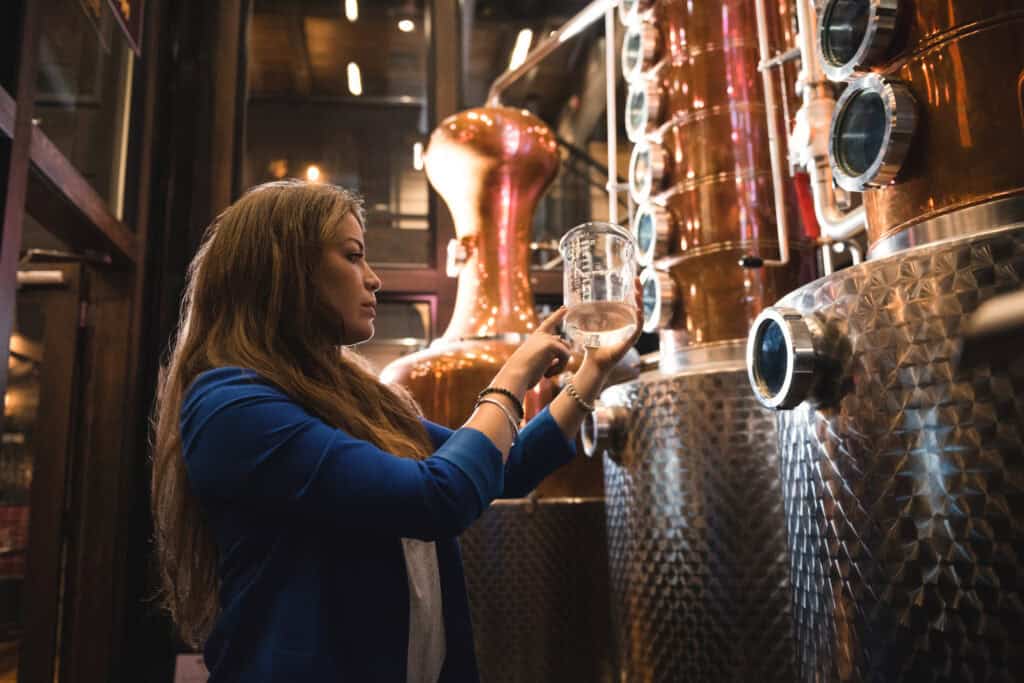
Eating the 302 A Local Guide to Delaware Food and Dining Culture
Delaware’s dining scene doesn’t need to shout to be heard. In the nation’s second‑smallest state, the best meals are close to the water, closer to the farms, and closest of all to the people who grow, catch, bake, and brew. Restaurants, cafés, bakeries, and breweries in the 302 thrive on tight supply lines and even tighter relationships. What you taste on the plate—sweet corn that still remembers the field, oysters that taste like the tide, breads with slow‑fermented character, a pint that captures a summer orchard—reflects a local economy of skill and trust. It’s why “Delaware businesses” so often feel like neighbors first and storefronts second, and why the “best businesses in Delaware” are usually the ones that treat hospitality as a community service as much as a profession.
This guide offers a deep look at Food & Dining in Delaware, from refined dining rooms in Wilmington to barefoot suppers at the beach, from laptop‑friendly cafés to dawn‑lit bakeries and family‑friendly taprooms. Along the way you’ll see how seasonality shapes menus, how collaboration keeps things fresh, and why “302 businesses” set their own pace—quietly excellent, deeply local, and tuned to the rhythms of land and sea.
Delaware’s Culinary Identity: Local and Seasonal
The state’s geography is its recipe. Delaware sits between fertile farmland and the Atlantic, bordered by marshes and bays where oysters and blue crabs fatten, and stitched with backroads that deliver produce to kitchens in a matter of hours. Seasonality isn’t a slogan here; it’s the calendar chefs cook by. Summer is lush and generous—heirloom tomatoes that need nothing but salt, corn so tender it barely wants heat, peaches that perfume a dining room. Raw bars brim with briny, cold‑water oysters and steamed crabs arrive at picnic tables with mallets and stories.
Autumn composes itself in copper and gold. Hard squash, apples, and late greens meet roasts and braises; chowders find their stride; beers tilt malty and amber. Winter slows the tempo and deepens the flavors. Root vegetables caramelize in the oven, short ribs surrender to long braises, and seafood stews warm hands wrapped around bowls. Spring returns with its own good news: asparagus, the first strawberries, young lettuces, and soft‑shell crabs that announce the season the way church bells announce a wedding. The short distance between source and plate lets chefs rewrite menus in real time, a luxury that keeps dining intimate and alive.
Restaurants: From Elegant to Casual Coastal

Wilmington leads with polish. In the city’s best dining rooms, the tone is confident but not stiff, blending modern American ideas with classical discipline. Menus tend to read like poems of place: seared scallops with sweet corn purée and basil oil, rockfish brightened by lemon and fennel, duck with cherries when orchards are singing. Kitchens here respect technique—stocks built patiently, sauces reduced to gloss, breads baked in house instead of outsourced. Wine programs favor food‑friendly bottles; cocktails lean seasonal; service is attentive without choreography. It’s the kind of hospitality where a server quietly steers you toward the day’s best oyster bed or suggests splitting the last slice of peach tart because “it’s the peak of the week.”
Head south to Newark and Dover and the mood shifts to creative comfort. College‑town energy and state‑capital steadiness make room for a lively mix of bistros, global kitchens, and neighborhood stalwarts. One night might be a bowl of ramen finished with a splash of locally brewed lager; the next, a skillet of mussels steamed with garlic and herbs, bread ready for dipping. Family‑owned spots add personality—menus written in the owner’s voice, house pickles brightening burgers, desserts that taste like someone’s grandmother finally shared her recipe. Prices are sensible, regulars plentiful, and the service style familiar in the best way.
Further down the peninsula, coastal dining carries its own grammar. Much of it is written in shell and scale. In Lewes and Rehoboth, a raw bar can feel like a geography lesson in salt and current—delicate, grassy oysters from one bed; brinier, mineral‑etched specimens from another. A good night might start with crudo that lets a fish’s sweetness speak for itself, then drift into a plate of simply grilled drumfish with lemon and capers, or a hearty seafood stew that’s been allowed to find itself over an afternoon flame. Boardwalk classics coexist with chef‑driven rooms, and the distance between “paper‑covered crab house” and “white‑linen tasting menu” can be a ten‑minute stroll. The best restaurants at the beach don’t posture; they select, cook, and season the way the coast suggests—directly, generously, and with a respect for the day’s catch.
Across the state, one pattern unites the top businesses in Delaware dining: menus that move. Chalkboards change when a farmer calls; specials appear because an oyster farmer sent word about a particularly sweet lot; desserts riff on whatever the orchard delivered that morning. This agility keeps dining interesting and makes repeat visits feel like checking in on a conversation rather than replaying a greatest hits album. It also rewards trust. Guests learn to order what the kitchen is excited about that day, and restaurants earn reputations for food that’s alive rather than rehearsed.
Design and atmosphere are part of the story. Wilmington’s brick‑and‑beam rooms glow at night; coastal patios capture salt air and last light; Newark’s cozy corners invite lingering. But ambiance never outruns substance. In Delaware, the strongest rooms are those where style amplifies flavor rather than distracts from it. Even in fine dining, pretension is rare. You’ll see chefs in the dining room chatting with guests, servers who can tell you which farm grew the baby carrots, and bartenders who treat a pre‑dinner spritz as an edible welcome mat.
Reservations help at peak times, especially in summer at the beaches and on weekends up north, but spontaneity still has a place. Many rooms hold seats for walk‑ins, and off‑season months offer locals the luxury of unrushed meals and easy tables. For travelers chasing “best businesses in Delaware” lists, that shoulder season can be the sweet spot: the same kitchens, the same producers, the same sea—just fewer crowds and conversations that stretch a little longer.
Cafés and Coffee Shops: The Community’s Living Rooms
Café culture in Delaware wears many faces, but the heart is the same: a third place where the day gets its bearings. Morning rushes pack counters with regulars ordering the usual—an oat‑milk cappuccino or a classic drip with room—before settling into corners to read, answer emails, or trade hellos with neighbors. By late morning, sunlight finds tables stacked with laptops and notebooks; soft music makes space for concentration; a barista calls out a pour‑over by origin, not just size. Single‑origin espresso lives comfortably next to old‑school diner coffee; both have their moment, both have their loyalists.
Many cafés roast their own beans or build relationships with small regional roasters, which gives conversations at the counter a pleasing specificity. A barista might talk you through why a washed Ethiopian sparkles with citrus while a natural process leans toward berries and cocoa. Milk gets the same care—steamed for texture, not just heat—and latte art turns quick breaks into small rituals. Iced options aren’t an afterthought; cold brew concentrates and flash‑chilled pour‑overs keep flavor bright when temperatures climb.
Food programs have grown confident. Breakfast means croissants that actually shatter, breakfast sandwiches with real structure, yogurt bowls that celebrate local fruit, and toast programs that prove a good loaf is a canvas. Lunch brings quiches with thoughtful fillings, soups simmered from scratch, and sandwiches layered on bread made a few miles away. Afternoons have their own ceremony: the cookie window, the “one more espresso before school pickup,” the book club that slides into happy hour with an herbal tea or a decaf cappuccino because the conversation isn’t done. Evenings host open‑mics, readings, small gallery hangs, and neighborhood meetings. In a small state where connections matter, cafés act as informal town squares—welcoming, unhurried, and wired just enough to be useful without losing the human warmth that keeps people coming back.
Bakeries: The Art of Daily Bread
In Delaware, you can tell time by a bakery’s rhythm. Before sunrise, ovens exhale, and racks fill with loaves that hold the memory of slow fermentation. By opening, a line forms—neighbors greeting each other, children with allowance money eyeing the case, a chef from down the street picking up boules for evening service. Sourdoughs dominate the conversation for good reason: long ferments coax sweetness out of grain, deepen aroma, and build a crumb that feels alive. Country loaves sing when sliced; baguettes crackle; rye breads bring an old‑world chew that turns a simple lunch into something substantial.
Lamination is another language bakers speak fluently. Croissants with honeycomb layers, chocolate‑filled pains that balance rich and bitter, morning buns with citrus zest and a lacquered top, seasonal danishes that give fruit a stage—it’s all part of the daily theater. Pies follow the farm calendar, moving from strawberry‑rhubarb to peach to apple with an easy grace. Cookies hold nostalgia in one hand and technique in the other, hitting that perfect tension between crisp and chew. Many bakeries broaden the table with gluten‑free breads that rise with dignity and vegan pastries that prove plant‑based can still be indulgent.
The bakery‑café hybrid thrives here. A cappuccino beside a still‑warm slice of olive‑oil cake makes a morning feel generous; a tartine with whipped ricotta, charred scallions, and a drizzle of local honey turns into an effortless lunch. When bakers partner with cafés and restaurants—supplying loaves for service, swapping seasonal ideas—the entire food ecosystem benefits. It’s collaboration you can taste.
Breweries and Brewpubs: Craft Beer Culture Thrives

Delaware’s brewing scene is both pioneering and personal. Taprooms function as neighborhood living rooms where long tables make strangers into teammates during a board game, and where families feel welcome on Saturday afternoons. Lineups usually balance reliability and curiosity: a crisp pilsner to reset the palate, a resinous IPA for hop lovers, a roasty porter when the air turns cool, a fruited sour in late summer that tastes like the market smelled that morning. Seasonal releases become diaries of the year—citrus‑zested wheats at the beach, festbiers in fall, spiced porters when the lights on the boardwalk grow fewer https://bestof302.net/building-fast-in-a-small-state-a-delaware-guide-to-startups-and-innovation/ .
Brewpubs blur the line between kitchen and brewhouse. Chefs braise short ribs in a malty brown ale, glaze wings with a citrus‑forward IPA reduction, or steam mussels in a Belgian‑style witbier until the broth begs for bread. Pairings are friendly introductions rather than rules. A peppery saison lifts a crab cake, a clean lager flatters a fried flounder sandwich, and a chocolate stout doubles as dessert. Many breweries collaborate with nearby farms—honey in a farmhouse ale, peaches in a kettle sour, berries in a gose—turning drafts into snapshots of the region.
The culture around beer here is inclusive. There’s space for the enthusiast logging tasting notes and for the parent with a stroller seeking a relaxed hour. Food trucks rotate to keep things interesting—tacos one week, wood‑fired pizza the next, smashburgers after that—and some breweries run kitchens that treat pub food as a craft rather than an afterthought. As with restaurants and cafés, the emphasis is on relationships and rhythm. Staff remember styles you like and point you toward a new release that fits; guests return the favor with the most valuable currency a small business can receive: word of mouth.
Food & Dining as a Community Connector
If you want to see how Delaware works, look at how it eats. Farmers’ markets function like open‑air logistics hubs and weekly reunions in one. Chefs shop at dawn, bakers choose fruit for weekend pies, brewers pick berries for the next small‑batch sour, and home cooks trade tips in line. Food festivals feel more like block parties than exhibitions—crab feasts where a pile of shells becomes a sculpture, chowder cook‑offs that provoke good‑natured debate, farm suppers where you sit across from the person who milked the cow or picked the tomatoes.
Collaboration is a signature move. A café showcases a chocolatier’s truffles. A bakery bakes a beer bread with a neighbor’s amber ale. A restaurant builds a dessert around a creamery’s seasonal ice cream. These cross‑pollinations don’t just make menus interesting; they keep dollars circulating locally, strengthening the same network that makes Delaware resilient. It’s one reason “top businesses in Delaware” so often feel woven together. Success here is rarely solitary—it’s a web of mutual support where excellence in one corner brightens the whole.
A Day of Eating the 302
Start just after sunrise in a café that opens early enough for fishermen and bakers. Order a pour‑over that tastes like citrus and stone fruit and a croissant that announces itself with every bite. Watch the town wake up—contractors grabbing to‑go cups, a librarian reading in the corner, students comparing schedules. Late morning turns to lunch at a bakery‑café where the bread is still warm. Share a tartine dressed with whipped ricotta and charred greens, then take a country loaf home for dinner.
Afternoon drifts to a brewery patio. A crisp pilsner meets a plate of fries dusted with Old Bay, and the day slows down just enough to notice the breeze. If a food truck is parked out front, try whatever smells like it found the grill five minutes ago. Dinner belongs to the coast or to a city room you’ve been saving—grilled fish with lemon and capers at the beach, or seared scallops with sweet corn purée up north. Dessert is a slice of pie that tastes like the orchard, or a stout that behaves like chocolate cake. The day ends as it began—in a place where someone knows your name or will by next week.
Practical Wisdom for Delaware Dining
Because the 302 is compact, timing matters. Summer weekends at the beaches test patience; reservations and early dinners help. Off‑season months offer a different pleasure—room to stretch out, easy parking, slower meals, and conversations that linger. In Wilmington and Newark, weekday lunches move briskly but are still human; dinner service peaks Thursday through Saturday. If you eat with kids, breweries and casual coastal spots welcome families and dogs with genuine hospitality. If you eat gluten‑free or plant‑based, bakeries and cafés increasingly have thoughtful options that feel crafted rather than compromised. Everywhere, ask what’s new. The best answer will usually be whatever was harvested, hauled, shucked, or baked today.
The Future of Food in Delaware
The next chapter looks inventive and grounded at once. Pop‑up suppers and chef collaborations will keep menus nimble and give young talent a stage without the weight of a full build‑out. More shared kitchens and food‑hall‑style spaces may appear, lowering barriers for first‑time operators and letting diners sample widely under one roof. Fusion won’t be a gimmick but a conversation—crab folded into a spicy ramen broth, tacos built around locally caught flounder and farm‑fresh slaw, European‑style breads paired with Mid‑Atlantic cheeses and beer‑infused spreads. The most interesting plates will feel both global and Delaware‑true.
Sustainability will move from aspiration to operating system. Kitchens are already trimming waste by repurposing trim into stocks and sauces, turning day‑old bread into croutons and puddings, and choosing reusable or compostable packaging. Breweries send spent grain to bakers and farmers; cafés choose oat and almond milks with lower footprints and recycle grounds into garden soil. Transparency around sourcing will deepen, with menus that not only name farms but also explain how seasons shape dishes. Technology will smooth edges without blunting personality: online waits that let you stroll while you queue, pre‑orders for bread drops so fewer loaves go unsold, loyalty tools that reward regulars in ways that feel like thanks rather than tracking.
Most important, the culture that already distinguishes Delaware dining—the habit of collaboration, the pride in local craft, the willingness to listen to the seasons—will continue to anchor growth. As more travelers look for experiences with a sense of place, and as locals keep championing “best businesses in Delaware” that reflect their values, the 302 will stay exactly what it is now: a small state with a big appetite for quality, community, and authentic flavor.
Why the 302 Way Works
Delaware proves that scale is not destiny. In a landscape where national chains can feel interchangeable, 302 businesses win by being particular—about ingredients, about service, about the relationship between guest and host. Restaurants make room on the chalkboard for whatever the bay and farm send. Cafés turn caffeine into community. Bakeries keep daily bread a daily ritual. Breweries brew pints that taste like right now. The result is a dining culture that’s easy to love and hard to replicate.
If you’re ranking the top businesses in Delaware by the quiet power of their impact, start with the places that make the state feel like home: the dining rooms that remember your favorite wine, the cafés that ask about your week, the bakeries where the line becomes a conversation, the taprooms where an hour becomes a friendship. That’s the flavor of the 302—and it’s what keeps people coming back, plate after plate, cup after cup, pint after pint.